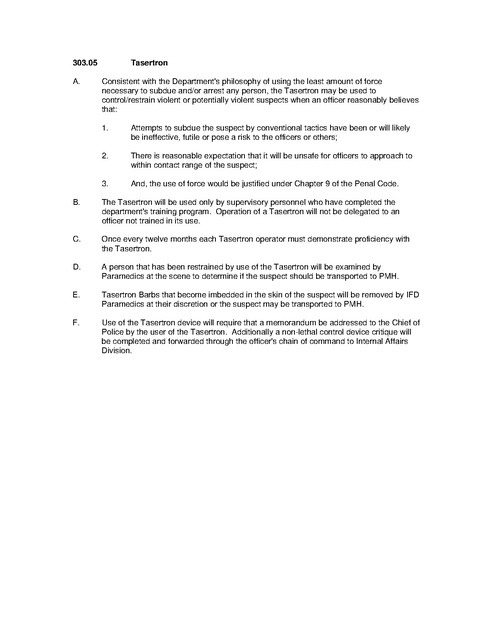Taser Irving Tasertron Policy
Download original document:

Document text

Document text
This text is machine-read, and may contain errors. Check the original document to verify accuracy.
303.05 A. Tasertron Consistent with the Department's philosophy of using the least amount of force necessary to subdue and/or arrest any person, the Tasertron may be used to control/restrain violent or potentially violent suspects when an officer reasonably believes that: 1. Attempts to subdue the suspect by conventional tactics have been or will likely be ineffective, futile or pose a risk to the officers or others; 2. There is reasonable expectation that it will be unsafe for officers to approach to within contact range of the suspect; 3. And, the use of force would be justified under Chapter 9 of the Penal Code. B. The Tasertron will be used only by supervisory personnel who have completed the department's training program. Operation of a Tasertron will not be delegated to an officer not trained in its use. C. Once every twelve months each Tasertron operator must demonstrate proficiency with the Tasertron. D. A person that has been restrained by use of the Tasertron will be examined by Paramedics at the scene to determine if the suspect should be transported to PMH. E. Tasertron Barbs that become imbedded in the skin of the suspect will be removed by IFD Paramedics at their discretion or the suspect may be transported to PMH. F. Use of the Tasertron device will require that a memorandum be addressed to the Chief of Police by the user of the Tasertron. Additionally a non-lethal control device critique will be completed and forwarded through the officer's chain of command to Internal Affairs Division.




